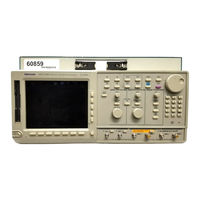Tektronix AWG710B Waveform Generator Manuals
Manuals and User Guides for Tektronix AWG710B Waveform Generator. We have 1 Tektronix AWG710B Waveform Generator manual available for free PDF download: User Manual
Tektronix AWG710B User Manual (580 pages)
4 GS/s / 4.2 GS/s Arbitrary Waveform Generator
Table of Contents
-
Preface
25 -
-
Options36
-
Installation38
-
-
Tutorials
95-
Reference131
-
Reference
133 -
Menu Structures
133 -
-
The Trigger Menu176
-
-
The File Menu188
-
The Tools Menu202
-
The Window Menu212
-
-
The File Menu217
-
The Tools Menu217
-
The Window Menu221
-
Set Pattern226
-
Quick Editing
229-
Screen Display229
-
Quick Edit Mode230
-
About Smoothing231
-
Quick Controls231
-
About Undo234
-
-
The Table Editor
235 -
-
-
The APPL Menu
261-
Disk Application261
-
-
-
Focused Color288
-
Hardcopy300
-
-
-
File Conversion
349 -
File Management
355-
Command Summary355
-
Path Name355
-
File Operations356
-
-
FG Mode
363-
Parameters366
-
-
File373
-
Update376
-
Operation Flow377
-
-
Restrictions380
-
Setup Screen383
-
Operation Flow387
-
-
-
-
Conventions433
-
Self Tests434
-
-
-
Conventions487
-
Self Tests488
-
Connector494
-
-
Sample Waveforms
537 -
Miscellaneous
551 -
-
Header563
-
Jump Settings565
-
Examples566
-
-
Index
567
Advertisement
